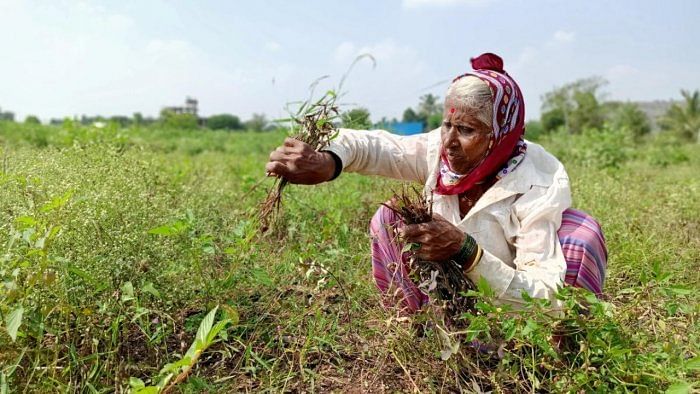
During the presentation of the Union Budget 2023–24, Finance Minister Nirmala Sitharaman articulated the importance of bringing stability to the Indian economy. Many economists expected a massive allocation for the agricultural sector in the budget, especially after the repeal of three farm law bills. The FM was expected to balance it by bringing major reforms to the agricultural sector while increasing capital expenditure. Has she also tried to bring similar stability to the agricultural sector, and how will the sector benefit from the UB 2023–24?
The agricultural sector allocation decreased drastically from Rs 1.33 lakh crore in the Union Budget 2022–23 to Rs 1.25 lakh crore in 2023–24. It received only 3.78 per cent of the total budget share in 2021–22; this was reduced to 3.36 per cent in 2022–23 and further reduced to 2.78 per cent this year.
Also, public spending in the agricultural sector has fallen sharply to 4% in 2022–23 (Economic Review, 2023–24). Many economists commended the budget for increasing overall spending by 14.1% compared to the previous budget. However, the share of agricultural sector has decreased by 4.8% compared to last year.
Also Read | Budget and the rural sector
A careful examination of the budget paper also shows that the government has cut the budget for prominent agricultural programmes when farmers face the problems of increasing input costs and not getting remunerated prices. Among all programmes, MGNERGS experienced its most significant decrease of Rs 13,000 crore (17.8% decrease in 2023-2024 from the previous year), followed by the PM-Kisan grant, which declined by Rs 8000 crore (17.8%), and the Rashtriya Krishi Vikas Yojana allocation, which decreased by Rs 3,283 crore (31%).
The decrease in funding for the programme mentioned above will significantly reduce farmers’ income and negatively impact agricultural productivity. In addition, rural workers will have difficulty getting job guarantees because of the reduction in the fund for MGNREGS.
Farmers will face two significant challenges due to the reduction of funds for two major programs. First, production-related risks (natural disasters, pests, diseases, etc.) are mainly due to the 12.1% for the Crops Insurance Scheme. Secondly, the market risk caused by the massive reduction of the fund from Rs 15000 crore to Rs 0.1 crore for the market intervention plan and price support. Farmers would be more vulnerable to production risk and price fluctuations in the future, putting their livelihoods at risk. Without developing the agricultural sector and infrastructure, the government wants to introduce more market-driven reforms and move away from the production-driven sector. This shows that the government is slowly reducing its intervention in the most crucial sectors of the Indian economy.
The increase in institutional credit allocation from 18.6 lakh crore to 20 lakh crore in UB 2023–24 is a step in the right direction. Yet, given that the agricultural sector continues to be a major source of income for about 60 per cent of the population, the marginal increase in institutional allocation is insufficient. Furthermore, as small and marginal farmers borrow more from the informal sector than the formal one, they will need more than a rise in allocation.
Also Read | Green growth: Budget numbers don't add up
The government placed much emphasis on organic and natural farming in the budget, despite the fact that it accounted for barely 3% of the nation’s net sown area. As the population grows, India may not achieve food security by focusing more on organic farming. To connect small and marginal farmers with international markets, the government should have given priority to the promotion of contract farmers in states.
A suitable institutional framework is also needed to help small and marginal farmers. Making India a global millet hub and increasing the agricultural sector’s storage facilities would help the farmers diversify their crop patterns.
The government needs to recognise that cutting agriculture funding will not help create an alternative market for farmers, doubling their income, promoting commercial crops, reducing cultivation risk, and, more importantly, connecting our small and marginal farmers to global markets. But the data presented above shows that the budget neglected the agriculture sector.
(Kedar Vishnu is an assistant professor at the NMIMS, Mumbai, and Ashish Andhale is a PhD scholar at the Gokhale Institute of Politics and Economics.)